Horizontal datum: orientation
The official geodetic datum is the New Zealand Geodetic Datum 2000 (NZGD2000), which is defined in LINZS25000: Standard for New Zealand Geodetic Datum 2000. The official projections are the NZGD2000 Transverse Mercator 2000 meridional circuit projections listed in Schedule 3 CSR 2021.
For further information see:
Bearings in terms of NZGD2000
A survey which defines or marks a new primary parcel boundary point must orientate all bearings in terms of the official geodetic projection applicable to the area unless the survey does not make a new field measurement (r 16(1) and r 16(2)).
All bearings in a survey must be in terms of the same horizontal projection (r 16(3)).
Obtaining and proving orientation
Surveyors will need to carry out sufficient work to ensure that the bearings derived from existing NZGD2000 surveys are in terms of the local NZGD2000 projection. Equally, sufficient work will need to be undertaken to ensure that the bearings from Old Cadastral and NZGD1949 surveys are in terms of the local NZGD2000 projection.
Reliable orientation can be obtained by several methods including:
- observing orientation lines into the survey from control marks
- calculating orientation from cadastral survey network marks (CSNMs) located at a sufficient distance to provide an accurate orientation (within the accuracy standards in Part 4, Subpart 2)
- observing some or all lines using GNSS technology (refer to Bearings from GNSS below)
- obtaining an orientation from a previous cadastral survey dataset (CSD) proven to be in terms of NZGD2000.
How the orientation has been obtained/proven is an important component of the survey report (r 72(c)).
Bearings from GNSS
Orientation derived by GNSS can be determined directly in terms of the official geodetic datum independently of the orientation of existing surveys and old marks in the locality.
The practice of adjusting GNSS derived bearings to be in terms of existing surveys and old marks in the locality creates a risk that the final orientation will not be in terms of the required datum and projection.
Confirming bearings from three origin marks
Where orientation is obtained from existing marks, there are several ways that surveyors can test that their bearings are in terms of the applicable meridional circuit projection. Examples include:
- observing from a mark on the survey to a CSNM at a suitable distance from the survey and comparing the observed bearing with one calculated from coordinates
- connecting the survey, either by measurement or by adoption, to two or more CSNMs and comparing the surveyed bearing with one calculated from Landonline coordinates. When making this comparison, the marks used should be far enough apart to minimise the effects of coordinate inaccuracies
- examining the chain of previous surveys (including the associated survey reports) to validate the reliability of the original orientation.
These tests should verify that the bearings are in terms of the applicable circuit projection within the tolerances specified in the accuracy standards. Note that the tolerances apply across the whole of the survey and therefore the most critical test is between the marks furthest apart.
Surveyors should note that orientation is dependent on the accuracy of the previous survey or surveys. Care must be taken in the absence of control network marks or where existing surveys ‘daisy-chain’ off each other. An accumulation of small bearing errors often results in the orientation being in terms of the origin marks, but not necessarily in terms of the applicable datum or projection.
Bearings on accepted boundaries (including magnetic bearings)
Bearings for accepted boundaries are not required to be shown in the CSD and therefore do not need to be in terms of the official geodetic projection. Where bearings of accepted boundaries are shown, they need to be in terms of the projection used for the CSD.
Bearings for non-primary parcel surveys
Rule 16(1) does not apply where a cadastral survey only creates non-primary parcels, such as an easement parcel. In these situations, bearings can be in the same terms as the underlying parcel boundaries, which may be in terms of Old Cadastral or NZGD1949 datums.
Exceptions to this, where bearings must be in terms of the official projection, are where:
- the relationship of a non-primary parcel boundary to its underlying parcel is inaccurately determined under rule 51 or rule 53
- the non-primary parcel defines a right over water in terms of Part 6, Subpart 8
- an underlying parcel boundary is affected by ground movement other than Canterbury earthquake movement and the relationship of a non-primary parcel boundary to the underlying parcel boundary is inaccurately determined under rule 110(3).
Refer to:
Bearings for surveys with no field measurements
Rule 16(1) is also not applicable in the case of a cadastral survey that has no new field measurements (r 16(2)). In this case bearings can be in terms of the underlying parcel boundaries, which may include Old Cadastral or NZGD1949 datums.
Bearings for reinstatement surveys
A simple boundary reinstatement survey may be in terms of the underlying survey projection; however, a complex boundary reinstatement needs to be in terms of the official projection (r 114(3) and r 115(1)).
Refer to:
Horizontal datum: connection
When network connection requirement applies
Rule 17 requires a survey to connect to a CSNM if there are any new boundary points, new boundary marks or old boundary marks on a primary parcel being created.
A CSNM is a survey mark that has been assigned a NZGD2000 coordinate with a Landonline horizontal order 6 or better (Schedule 4).
The connection needs to be made by adoption or measurement and is required regardless of how close a CSNM is to the site.
If a CSNM is within 1,000m of any new boundary point (marked or unmarked) or old boundary mark on a primary parcel being created, that CSNM must be connected to. If there is not a CSNM within 1,000m, any CSNM can be connected to.
These requirements apply regardless of the class of the boundary points. Landonline business rule C640 will test compliance with this rule.
Figure 1 illustrates a primary parcel boundary mark requiring connection within 1,000m of a CSNM ‘as the crow flies’.
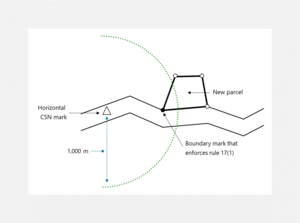
Figure 1: Primary parcel boundary mark requirement to connect to a CSNM within 1,000m
Connections to one or more CSNMs are also required for surveys defining non-primary parcels in terms of rules 51, 53, 65 to 70 and 110(3).
Refer to:
Establishing a new CSNM
Where there are no CSNMs that can be readily connected to, the PositioNZ-PP service can be used to generate order 6 CSNMs that can be added to Landonline in advance of a CSD being submitted.
Refer to:
Horizontal connection not required
Rule 17 only applies where a primary parcel is being created that includes new boundary points (marked or unmarked) or old boundary marks. Examples of surveys that do not require connection to a CSNM are:
- boundary reinstatement surveys
- surveys creating non-primary parcels only, such as an easement or covenant survey (unless the relationship to the underlying parcel is inaccurately determined under rule 51, 53 or 110(3))
- a parcel without survey information dataset that creates a new primary parcel with the same boundary positions and vectors as an existing primary parcel.
Coordinates not required
Although surveyors sometimes use coordinates extracted from Landonline for survey calculation purposes, CSR 2021 does not require coordinates or an origin of coordinates to be provided as part of the CSD.
Vertical datum
The official national vertical datum for New Zealand is the New Zealand Vertical Datum 2016 (NZVD2016). It is defined by the NZGeoid2016 geoid with heights expressed in the normal-orthometric system.
Refer to:
Rule 18 requires all reduced levels (RLs) in a survey to be expressed in terms of a single official vertical datum.
Schedule 5 of the Cadastral Survey Rules 2021, which lists the official vertical datums that may be used in cadastral surveys, was amended to mandate the use of NZVD2016 from 1 July 2024.
Alternative or assumed datums are no longer permitted, except as permitted by rule 62 (see below) or dispensation.
Height-limited boundary points on existing unit developments
The only relaxation of rule 18 is that RLs in a unit title development must be expressed in the terms of the previously deposited CSD for the development (r 62(1)). If an unofficial or assumed datum has been used, the vertical control mark required under rules 18(2) and (3) must also be provided with a RL in terms of the unit development datum (r 62(2)).
Height-limited boundaries
A height-limited boundary is a primary or non-primary boundary that defines the vertical extent of a parcel (sometimes referred to the upper and lower limit). Unless it is the surface or bed of a water body, a height-limited boundary must be a mathematically described surface with at least one point defined by an RL. Height-limited boundaries were previously referred to as stratum boundaries.
Refer to:
When a vertical control mark (VCM) must be included
If a new height-limited boundary point is defined by a RL, then the survey must include a VCM (r 18(2) and r 18(3)).
A VCM is a survey mark that has been assigned a height in terms of NZVD2016 with a Landonline vertical order 3V or better (Schedule 6). The mark must have a NZVD2016 height of order 3V or better, assigned by LINZ. A 3V mark in terms of an old local vertical datum, even if converted to NZVD2016, is not acceptable.
If a VCM exists within 1,000m of a new height-limited boundary point, the VCM must be included in the survey, irrespective of accuracy class (r 18(2)). If there is more than one VCM within 1,000 metres, only one of them needs to be included in the survey.
Figure 2 illustrates a non-primary height-limited boundary point with a VCM within 1,000m that must be included in the survey.
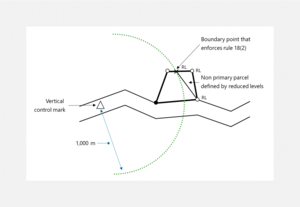
Figure 2: Height-limited boundary point requirement to include a VCM within 1,000m in the survey
If a VCM is not available within 1,000m, a VCM at any distance from a new height-limited boundary point must be included in the survey (r 18(3)). Distance is horizontal 'as the crow flies'.
To check compliance with rule 18 the relevant VCMs can be extracted from Landonline and imported into survey software to calculate a join. Alternatively, coordinates for relevant VCMs can also be obtained from the LINZ Geodetic Database and a join computed between the VCM and a new height-limited boundary point defined by reduced level.
Refer to:
Note that a VCM only needs to be included in the CSD and might not need horizontal connections to be captured. In these cases, compliance with rule82(e) can be achieved by adding the annotation on the title diagram 'Levels are in terms of [vertical datum], VCM [geodetic code and mark name], RL [value].'
Refer to:
Accuracy of non-boundary marks
Rule 19 ensures there is an accuracy framework for the network of non-boundary survey marks that enables boundary positions to be accurately determined in relation to one another and correctly reinstated in the future.
The horizontal accuracy between new or old non-boundary marks (survey marks) must not exceed 0.025 + (dist × 0.00005)m to a maximum of 0.20m.
This formula is based on a fixed amount plus an amount dependent upon the horizontal distance between the new or old survey marks, capped at 0.20m. The accuracy standard is straight forward, independent of any accuracy class of boundary and is a concept familiar to surveyors.
The vertical accuracy between any 2 new or old non-boundary marks must not exceed 0.030 + (dist × 0.0001)m to a maximum of 0.20m. The vertical standard is also capped at 0.20m, is independent of any accuracy class of boundary and the dependant distance is slope distance.
Horizontal accuracy standards will be tested by Landonline internal consistency and network adjustments. Vertical accuracy cannot be tested in Landonline because RLs are only included in a CSD as user added text.
Accuracy of connection to control network
The horizontal accuracy between a CSNM and a new or old non-boundary mark must meet the same accuracy standard that applies between non-boundary marks in rule 19, unless connecting to an adopted CSNM.
The horizontal accuracy for a connection to an adopted CSNM must not exceed 0.025 + (dist x 0.00015)m to a maximum of 0.20m (r 20(1)).
There is no provision for the adoption of vectors that fail this accuracy standard but meet the survey accuracy tolerances in place at the time of the original survey.
The vertical accuracy between a VCM and a new height-limited boundary point must not exceed 0.030 + (dist × 0.0001)m to a maximum of 0.20m, where ‘dist’ is the slope distance between the marks (r 20(2)).
Accuracy of boundary referencing
The accuracy tolerances between a boundary point required to be referenced by a permanent reference mark (PRM) and all old and new non-boundary marks within the distance specified for the class of boundary point are as follows (r 21 and r 32(1)):
- Class A 0.03m horizontal 0.04m vertical within 150m
- Class B 0.20m horizontal 0.20m vertical within 500m
- Class C 0.60m horizontal 0.60m vertical within 1000m
- Class D not applicable (horizontal and vertical).
These tolerances enable boundary points to be confidently reinstated from any one of the non-boundary marks in the future. This includes those marks without a direct connection to the boundary point and in some cases may not include the survey mark used to place or tie to the boundary mark.
The vertical tolerances relate to boundary points on a height-limited boundary.
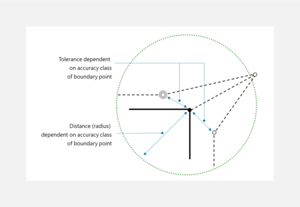
Figure 3: Distance (radius) and tolerance depend on accuracy class of boundary point.
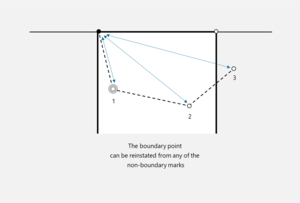
Figure 4: The boundary point can be reinstated from any of the non-boundary marks.
Accuracy of boundaries
Classes of accuracies are assigned to boundaries and boundary points based primarily on specific land use. A parcel can be made up of a mixture of classes of boundaries, which are defined in rules 22-25 as:
- class A (urban and the most accurate)
- class B (rural and not as accurate as class A)
- class C (used in specified rural circumstances where a less accurate boundary is acceptable)
- class D (used in exceptional circumstances where the existing boundary accuracy is unknown or unable to be determined and it is appropriate to permit these inaccuracies to remain).
The survey class is displayed in the survey header, which can only show one class. If the CSD has used more than one class, the higher class is usually shown in the header. This is not a rule requirement however, so the majority class may be shown instead. If other classes are used, the additional classes and reasons for their use can be discussed in the survey report. The class of each boundary vector or arc is shown in the CSD Mark and Vector report.
Class of boundary point
The accuracy class of a boundary point is the highest accuracy class of the boundaries connected to that point (r 26).
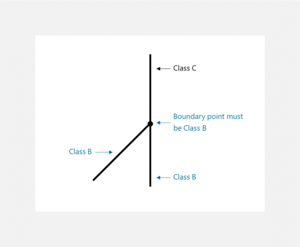
Figure 5: Accuracy class of boundary point.
Class of boundary vector
Where the end points of a boundary of a parcel under survey are of different classes, the lower class of accuracy applies between them (r 27(2)).
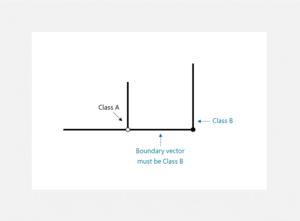
Figure 6: Accuracy class of boundary vector.
Inaccurately determined non-primary boundaries
Provision is made in CSR 2021 in specific cases for an inaccurate relationship between a non-primary parcel boundary and the underlying parcel.
Refer to:
Accuracy of boundary points
The horizontal and vertical accuracy tolerances between boundary points on a parcel under survey use a simple sum method to calculate the accuracy value (r 27).
- The class A tolerance increases from 0.06m at a rate of 0.015m per 100m.
- The class B tolerance increases from 0.30m at a rate of 0.06m per 100m.
- The class C tolerance increases from 1.00m at a rate of 0.30m per 100m.
The distance used to calculate the applicable accuracy between points is the horizontal distance for horizontal accuracy and the slope distance for vertical accuracy.
Where any two boundary points have different applicable accuracy classes, the lower class of boundary accuracy applies between those two points (r 27(2)).
These standards also apply:
- between the boundary points of a non-primary parcel and the boundary points of its underlying parcel where that underlying parcel is not created by the survey (r 27(4))
- to boundary reinstatement surveys (r 27(3)).
The accuracy tolerances apply to all horizontal and vertical boundaries and their associated boundary points on a parcel being created (including permanent structure boundaries).
The accuracy tolerances do not apply to adopted boundary vectors used for definition that are not between boundary points on parcels being created on the survey.
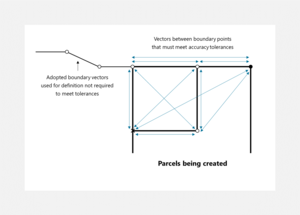
Figure 7: Accuracy tolerances apply to the relationships between all boundaries and their associated boundary points.
The boundary accuracy tolerances do not apply to the relationship between boundary points where the boundary points are on parcels that are not contiguous with other parcels being surveyed.
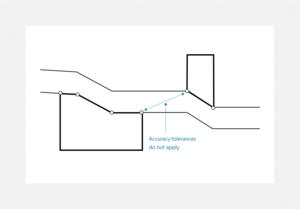
Figure 8: Accuracy tolerances do not apply to non-contiguous parcels.
Risk of boundary overlap
A boundary must be determined to a sufficient accuracy to ensure there is no risk of it intersecting or overlapping a new boundary and creating incompatible rights (r 28).
The risk of intersection or encroachment applies to all forms of adopted and accepted boundaries including right-line, irregular, and water boundaries.
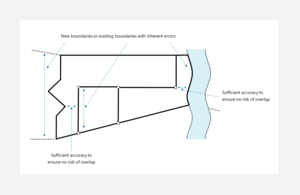
Figure 9: Accuracy standard to ensure no risk of overlap.
Permanent structure boundaries
Refer to:
Accuracies for water, water centre-line, and irregular boundaries
Water, water centre-line and irregular boundaries do not have an associated accuracy class (r 29(1)), although they still need to be determined to a sufficient level of accuracy to address factors such as (r 29(2)):
- boundary overlap or ambiguity
- statutory requirements applicable to the width or size of the water body
- the consequences of water body movement
- the nature of the physical feature defining the water body margin
- land value and the intensity of its use.
However, this requirement does not apply to accepted boundaries of this nature (r 29(3)).
Where a right-lined boundary intersects with a water, water centre-line or irregular boundary the bearing and distance will be of a separate class. The bearing will be either class A, B or C as appropriate and the distance will be class D (r 30).
Refer to:
Survey marks
The following definition of survey mark terms is provided as refresher for surveyors.
Boundary mark
A cadastral survey mark positioned at a boundary point
Cadastral survey network mark (CSNM)
A survey mark assigned a NZGD2000 coordinate with a Landonline order 6 or better
Disturbed survey mark
An old survey mark that is in a different position from where it was originally placed, but does not include a change of position due to Canterbury earthquake movement or fault zone movement
Non-boundary mark
A survey mark that is not on a boundary point
Old survey mark
A survey mark measured on the survey that is from the national survey control system or from an approved CSD
Permanent reference mark (PRM)
A reference mark that is likely to remain usable and not be disturbed in the foreseeable future, and accordingly made of durable material, set in stable material and located in a suitable position
Reinstated mark
A new survey mark placed in the position of a previous survey mark that has not been found
Renewed mark
A new survey mark placed in the same position as an old survey mark that has been found
Vertical control mark (VCM)
A survey mark assigned a height in terms of an official vertical datum with a Landonline order 3V or better.
Part 4 of the CSR 2021 (Field Survey) deals with three types of marks – PRMs, boundary marks and disturbed marks - for which guidance is provided below.
Boundary points to be referenced
PRMs are required by CSR 2021 to be used for referencing boundary points and marks.
The requirement under rule 31 to reference boundary points and marks applies to every:
- boundary point on a primary parcel that is defined by survey, other than a point on a water boundary, water centre-line boundary or irregular boundary (r 31(a))
- new or old boundary mark on the boundary of a parcel (primary or non-primary) under survey (r 31(b))
- new height-limited primary parcel boundary point that is defined by a RL (r 31(c)).
Figure 10 below illustrates an existing primary parcel being subdivided into two new parcels. The eastern and southern boundaries of Lot 1 are new boundaries. The blue dashed circles, which represent the referencing distance under rule 32, are centred on the boundary points and marks that must be referenced under rule 31.
The boundary points and marks that must be referenced by PRMs are:
- the three new boundary positions (marked and unmarked) that are defined by survey on Lot 1 (r 31(a))
- the old boundary mark on Lot 2 (r 31(b)).
The old boundary mark to the west of Lot 1 does not have to be referenced because it is not on the boundary of a parcel under survey.
The three adopted boundary marks on Lots 1 and 2 do not have to be referenced. However, if any of these positions were reinstated with a new boundary mark, it would have to be referenced (r 31(b)).
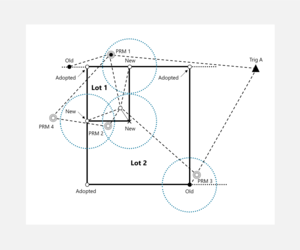
Figure 10: Boundary points required to be referenced.
Note that:
- PRM 4 is not required by CSR 2021. Additional PRMs can be included in the survey as long as they have the attributes of a PRM specified in rule 33
- Trig A could also be a PRM if it has the necessary attributes
- A PRM may be used to reference more than one boundary point if it falls within the referencing distance, such as PRM 2.
Referencing non-primary parcel boundary points
A new or old mark on a class A or class B non-primary parcel boundary point must be referenced in accordance with rule 32 (r 64).
A non-primary parcel boundary point does not have to be treated as a new primary parcel boundary point when it coincides with a primary parcel boundary.
Refer to the guideline on defining non-primary parcels using the control network for further information on referencing requirements where the relationship of a non-primary parcel to its underlying parcel is inaccurately defined.
Referencing height-limited boundary points
New height-limited primary parcel boundary points defined by RL and new height-limited boundary points on a unit parcel must be referenced to a PRM (r 31(c) and r 61(1)). The boundary point must be within 150m (Class A) and 500m (Class B) of the referencing PRM (r 61(4)). The survey must include a minimum of two PRMs with reduced levels (r 34) each within 150m (Class A) and 500m (Class B) of at least one boundary point (r 61(5)).
Exceptions to the PRM referencing requirements are:
- height-limited boundary points on easement, lease or covenant non-primary parcels (r 61(2))
- height-limited boundary points that intersect or coincide with an accepted boundary (r 61(3)).
Refer also:
Permanent reference marks (PRMs)
Number of and distance from PRMs
Where the rules require a boundary mark or point to be referenced, the survey must include a minimum of three PRMs. All three PRMs must be within the specified class distance of at least one boundary mark or point required to be referenced. This is within 150m for class A surveys, 500m for class B and 1,000m for class C (r 32).
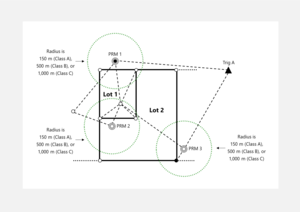
Figure 11: PRM number and distance requirements.
This requirement is also applicable to complex boundary reinstatement surveys under rule 114. However, simple boundary reinstatement surveys are not required to connect to a PRM (r 116).
Attributes of PRMs
PRMs are required by rule 33(1) to have such physical attributes, and be placed in such locations, to provide reasonable assurance that they will remain usable and not be disturbed in the foreseeable future. Attributes must include:
- made of durable material
- set in stable material
- located in a suitable position.
Although existing marks may have been in the ground for a long time or appear to be substantive, they must be assessed as to their suitability at the time of survey. Marks that are close to the surface of roads or footpaths or are in the likely building platform of an undeveloped urban lot or a right of way, are unlikely to satisfy future usability criteria.
An adopted mark must not be used as a PRM (r 33(2)).
Boundary marking
Because landowners are entitled to rely on boundary marks as the definitive markers of their estate, it is essential that:
- they are placed, where practicable, and
- when they are placed, they are recognisable.
‘Practicable’ means it is reasonably possible in practice to ground mark the boundary point. It may not be practicable to mark a boundary point if, for example, it is on a power pole or box, in a lake or close to the edge of an unstable cliff that would be unsafe to access.
This is different to when it is considered ‘impractical’ or ‘unreasonable’ (difficult, inconvenient or not sensible) to mark a boundary point. For example, it may not be safe or sensible to mark a boundary point within an active construction site, but it would be practicable to mark it later, even if it’s not until after construction is completed.
Dispensation must be sought from rule 35 where it is practicable to mark a boundary point but it is considered impractical or unreasonable to do so in a particular case.
See Survey dispensation requests for more information about applying for a dispensation.
The requirement to mark boundary points applies only to new primary parcels (r 35(1) and r 35(2)). Ground marking of non-primary parcel boundary points, including rights of way, is not required by CSR 2021. However, an unmarked non-primary parcel that is converted to a primary parcel must be marked (r 35(2)(h)).
Marking new boundary points
A new boundary point on a new primary parcel must be ground marked, if practicable. Exceptions to this requirement are:
Common ownership
Where a boundary point is common to new parcels that are all intended to remain in Crown or territorial authority ownership, then the point is not required to be ground marked (r 35(1)(a)).
A boundary point is not required to be marked where the point is common to parcels that are intended to be held in common ownership (r 35(1)(c)). An example of this is when the parcels are subject to a compulsory amalgamation condition under the Resource Management Act 1991.
However, this exemption does not apply to those situations where two adjoining parcels will be held in common ownership without any legal requirement to be held together. In this case, the points are to be marked.
Where a segregation strip is created to adjoin a road, the common boundary points of the segregation strip with the road are not required to be marked.
Note that although these boundary points are not required to be ground marked, they are required to be referenced (r 31).
Māori Land Court
Any new primary parcel boundary point on a Māori Land CSD survey must be marked. However, if the Māori Land Court considers the marking of the boundary to be unnecessary, it may specify that ground marking is not required (r 35(1)(b)).
Reciprocal rights of way
Where two parcels on each side of a boundary share reciprocal rights of way the boundary is not required to be ground marked (r 35(1)(d)). Surveyors should note that the rights of way must be a mandatory requirement in the same way that parcels in common ownership must be under rule 35(1)(c).
Unlikely to be physically located
A boundary point is not required to be marked where it is unlikely that it will need to be physically located in the foreseeable future because of the terrain, ground cover, or protected vegetation (r 35(1)(e)).
Examples include boundary points coinciding with a cliff face or within current or intended bush covenants.
Water, water centre-line or irregular boundaries
Water and water centre-line boundaries are not required to be ground marked (r 35(1)(g)).
Where a water, water centre-line or irregular boundary is being converted to a right-lined boundary, ground marking is not required for a class B survey. If the boundary is class A it will require ground marking (r 35(1)(f)).
Refer to:
Marking existing boundary points
Generally, an existing boundary point on a new primary parcel must be ground marked in situations where it needs to be identified to assist a legal process, or there is confusion regarding the boundary location.
Specifically, rule 35(2) requires ground marking, if practicable, where an existing boundary point is:
- subject to conflict, as defined in Schedule 2 (r 35(2)(a))
- insufficiently defined (r 35(2)(b))
- only defined on a diagram on transfer (r 35(2)(c))
- on a parcel having its limitation as to parcels uplifted (r 35(2)(d))
- on a parcel supporting an application to make a Hawke’s Bay interim title conclusive (r 35(2)(e))
- on a parcel subject to an adverse possession claim (r 35(2)(f))
- previously created on a Māori land CSD annotated with “computed plan – areas and boundaries not defined by survey” (r 35(2)(g)), or
- a previously unmarked non-primary boundary point (r 35(2)(h)).
Note, the exemptions from marking new boundary points on new primary parcels provided by rule 35(1) cannot be applied to existing boundary points that are required to be marked by rule 35(2).
Additionally, rule 109(1) requires each point on an affected primary parcel boundary to be marked, if practicable.
Refer to:
Ground movement – Ground marking and occupation information.
Boundaries of parcels to remain limited as to parcels
The boundary of a parcel that is to remain limited as to parcels must not be ground marked unless it is also part of a parcel having its limitation as to parcels uplifted (r 35(3)). This is because the determination of that boundary must ignore possessory occupation that would otherwise be taken into account on a survey to remove limitations. The placement of ground marks at these boundary points could appear to be disregarding possessory rights adverse to the registered owner.
Refer to:
Boundary marks
All boundary marks installed on a survey must be soundly anchored in place and, if practicable, readily visible (r 36(2)).
New boundary marks can be a traditional wooden peg, a post, a mark on a post identified as a boundary mark, or another type of peg (for example, aluminium or plastic) that is labelled as a boundary mark (r 36(1)).
If the use of any of those is not practicable, then any other type of mark can be used, provided it is clearly labelled as a boundary mark (r 36(1)(e)).
Iron spikes and lead plugs are unlikely to comply unless they are clearly labelled as boundary marks. A dumpy peg could fall into the category of another type of peg and therefore could be considered a boundary mark if labelled as such.
Wooden stakes would not generally be considered to meet the criteria of rule 36.
Engraving or branding of lot numbers, 'R', ‘RW’ and a broad arrow are no longer required on boundary markers, although surveyors may continue to show them if they wish.
Additional boundary marks
Where a new parcel is being created, additional boundary marks may be placed along existing and new parcel boundaries (commonly referred to as line marks). These marks must be defined by survey (r 13(b)) and referenced (r 31).
In the future, these boundaries points can be adopted and new boundaries may be calculated to them, providing the relevant boundary accuracy standards are met.
A boundary mark can only be placed on a boundary point (r 36(2)(c)). Therefore, boundary marks must not be placed in non-boundary positions, including offset marks and extraneous pegs for future stages of a subdivision.
Old marks and existing positions
The hierarchy of evidence ranks undisturbed original monuments second only to natural features. The physical monument(s) represent the bounds of the property for the property owner and the best definition of a boundary point is the original undisturbed boundary mark. Measurements have error but original, undisturbed boundary marks do not.
A mark’s reliability as evidence should be assessed in terms of:
- Whether the age, nature and depth agree with records
- Whether the mark is vertical
- Whether it maintains the same spatial relationship with physical features or occupation.
While undisturbed boundary monuments have a high weighting in the evidential hierarchy, surveyors are mindful that they have a higher risk profile than buried marks and should be treated with caution. However, a mark or boundary monument is not necessarily disturbed just because it does not mathematically agree with others, especially when there is other corroborating evidence available.
It is essential that the primary evidence of boundary location (old marks) is dealt with in a consistent and appropriate manner. This not only ensures that boundaries are correctly relocated, but that future users are able to evaluate the evidential value of this information.
Old boundary and survey marks
An old survey mark is an existing mark from the national survey control system or from an approved CSD that is located and measured to on a new survey. This includes old boundary marks.
Old mark no record
Where a mark, other than from the national survey control system, is found but its presence is not already recorded on a CSD, the mark is unofficial. It must be considered as new to the cadastre irrespective of the physical age of the mark.
In the cadastre there are CSDs that have been approved as to survey or approved for record purposes only. In both cases, these CSDs may have recorded OP no record or other similar marks. These marks are official for the purposes of future surveys, but their evidential value would need to be carefully assessed and their positions proven. If used in a later survey they must be referred to as an old mark with the prior CSD reference.
Refer to:
Treatment of unofficial marks
Where an unrecorded boundary mark is included in a CSD and has evidential value, it must be considered as new to the cadastre. This can be achieved by treating:
- the mark as a new boundary mark. In this circumstance, the surveyor is taking responsibility for the correctness of its position as a new boundary marker (r 13), or
- by treating the mark as evidence for the purposes of definition in a similar manner to a fence post (occupation). In this circumstance, the surveyor is required to provide details about the mark (r 81).
Where an unrecorded boundary mark is included in a CSD, but it has been determined as being incorrectly placed and is ignored for the purpose of definition, the peg may be shown as an occupational feature (r 81). In this case, the survey report must explain why the mark is not part of the survey evidence (r 72).
An unrecorded non-boundary mark must be treated as a new mark. This includes traverse marks placed by a survey not yet approved by LINZ.
Marks from monumentation CSDs are authoritative
A monumentation CSD is an authoritative CSD source. Surveys that use a mark originally recorded on a monumentation CSD must treat it as an old survey mark (Schedule 2).
Disturbed marks to be treated as new
A disturbed mark is not in its original position, and must therefore be treated as a new mark in its new position (r 37).
The use of the term 'disturbed' is a clear indicator that the primary evidence (the old mark) has been found but the surveyor has determined that it is not in the position it was originally placed. This allows future users to evaluate the evidential value of this information.
Allowance is made for a disturbed boundary mark to be removed or driven below the surface and rule 37(1) constitutes prior written approval of the Surveyor-General under s 55(5) of the Cadastral Survey Act 2002.
Historically, old marks (particularly old traverse marks) that appeared to be physically undisturbed, but when compared with other old marks via adopted vectors did not fit within mathematical tolerances, were in some cases termed unreliable, or out of position. The meaning of this term is not clear, and its use is therefore not appropriate. The surveyor is required to determine if a mark is in its original position or not. The fact that measurements indicate a mathematical disagreement with other marks does not necessarily mean the mark is disturbed.
Refer to:
Renewed marks
The term 'renewed mark' applies to a mark placed in the same position as an old mark that has been physically located. This applies to both boundary and non-boundary marks. If an old mark is not found, a new mark cannot be considered to be renewing it.
'In the position of' or 'replaced' instead of 'renewed' are not appropriate terms as they are not clear as to whether an old mark had been found prior to the placement of a new mark. Using 'renewed' is a clear indicator that the primary evidence of a position (the old mark) was found before it was replaced with a new mark.
Refer to:
Reinstated marks
'Reinstated' applies to a mark placed in the same documentary position as an unfound mark placed by a prior survey. This applies to both boundary and non-boundary marks.
'In the position of' or 'replaced' instead of 'reinstated' are not appropriate terms as they are not clear as to whether an old mark had been found prior to the placement of a new mark. Using 'reinstated' is a clear indicator that the primary evidence of a position (the old mark) was not found and a new mark has been placed on that boundary point. This allows future users to clearly evaluate the evidential value of this information.
Refer to:
Dispensations
A dispensation allows an exemption from a particular requirement of CSR 2021 or specifies an alternative requirement in relation to a particular survey. The dispensation then becomes part of the rules for the purpose of the surveyor's certification for that survey (s 47(6) Cadastral Survey Act 2002). The surveyor must either fully comply with the terms of the granted dispensation or with the normal rule(s).
Unless stated otherwise in the dispensation, it cannot be relied upon for any other survey.
Refer to: